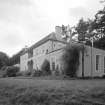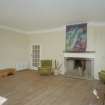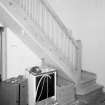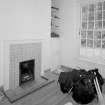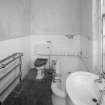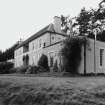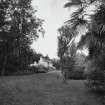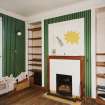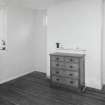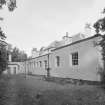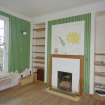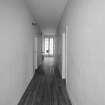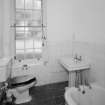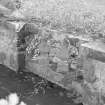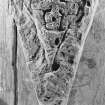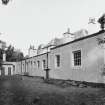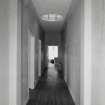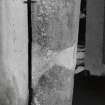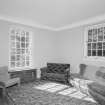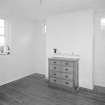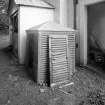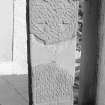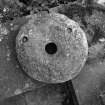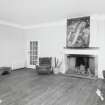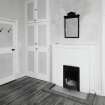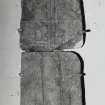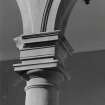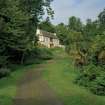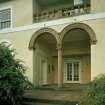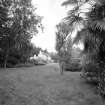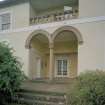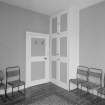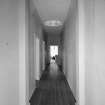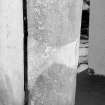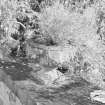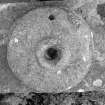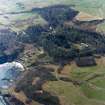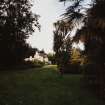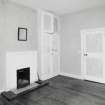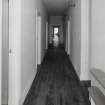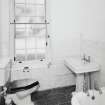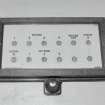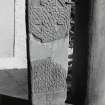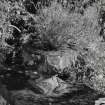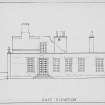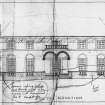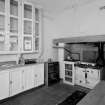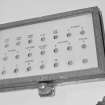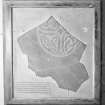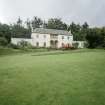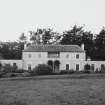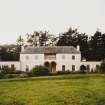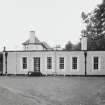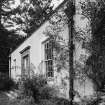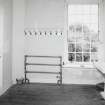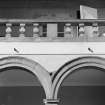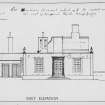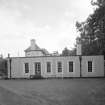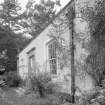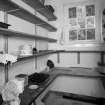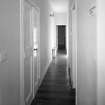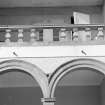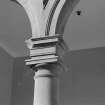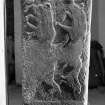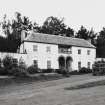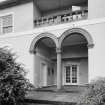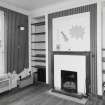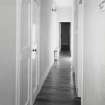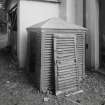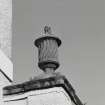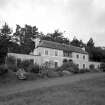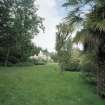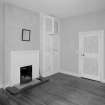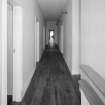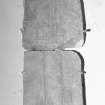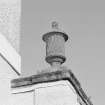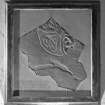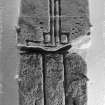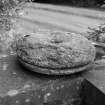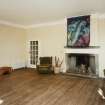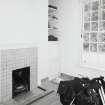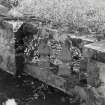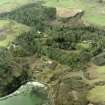Eigg, Eigg Lodge
Lodge (20th Century)
Site Name Eigg, Eigg Lodge
Classification Lodge (20th Century)
Alternative Name(s) Galmisdale, The Lodge
Canmore ID 106067
Site Number NM48SE 25
NGR NM 47897 84209
Datum OSGB36 - NGR
Permalink http://canmore.org.uk/site/106067
First 100 images shown. See the Collections panel (below) for a link to all digital images.
- Council Highland
- Parish Small Isles
- Former Region Highland
- Former District Lochaber
- Former County Inverness-shire
The Lodge, Robert Mauchlen of Mauchlen & Weightman, Newcastle, in collaboration with Sir Walter Runciman, 1926-1927 Colonial style villa (originally flat-roofed) more redolent of Fairey and Dawbarn's contemporary Raffles College in Singapore than any Highland lodge. Behind the handsome Italianate frontispiece, the house is very narrow in plan. The semi-tropical garden was largely the creation of Sir Steven Runciman in the 1930s, testament to the island's remarkable Gulf Stream microclimate. Here, flame trees, palm trees, horse chestnuts, azaleas, euchryphias and eucalyptus trees flourish, in lush contrast to the wild moor above.
Taken from "Western Seaboard: An Illustrated Architectural Guide", by Mary Miers, 2008. Published by the Rutland Press http://www.rias.org.uk
NM48SE 25.00 47897 84209
NM48SE 25.01 4790 8420 Eigg Lodge, Gardens and Gate Piers
NM48SE 25.02 4804 8394 Eigg Lodge, Crow's Nest
The Lodge [NAT]
OS 1:10,000 map, 1976.
A number of carved stone, probably discovered in the vicinity of St Donnan's Church (NM48NE 19) are now displayed in the porch of The Lodge, Galmisdale. For descriptions of the stones see NM48NE 24.
Information from RCAHMS (LMcC) 9 November 2009
Architect: A.F.Balfour Paul, (rebuilt after fire of 1930)
Owner: Lord Runciman
Publication Account (2002)
The present Eigg Lodge, constructed in 1927 is the fourth principal or owner's residence on the island. In 1827 Hugh MacPerson bought Eigg from George MacDonald of Clanranald, and he adapted and extended a pair of cottages known as Nead-na-Feannaige (the Crows Nest). This house lay to the south of te present lodge. His son Norman planted a large area of trees around the lodge from 1854, to promote pheasant breeding. These in turn provided shelter for the unique gardens that now surround the present lodge.
Robert Lawrence Thomson MacEwen bought Eigg as well as Muck and the Strathaird Estate in Skye in 1896. Robert Thomson, as he preferred to be known, build a new larger lodge soon after he acquired the island. It probably incorporated part of the earlier building and retained its name. As yet, the only record of this building is on the Second Edition of the Ordanance Survey map (published 1903). Thomson's son deicded to sell Eigg in 1916 to the wealthy tenant who had leased the island since his fathers death in 1913, the shipping magnate Sir William Petersen. Nead-na-Feannaige had mysteriously burnt down, which may have prompted the sale.
Sir William employed James B Dunn, 14 Frederick Street, Edinburgh, to design a spacious new lodge on a more prominent site to the north of the previous house, though still within the Victorian plantation. The drawings, dated December 1920, survive in the Mauchlen and Weightman Archive. Spiers Ltd. of Blythwood Square, Glasgow supliers of pre-fabricated buildings, were the contractors. The new house, known as the Whtie Lodge, was timber framed with a prominent tower, and was by far the biggest residence over constructed on Eigg. A factor's house was also built, now known as Gardener's Cottage. The Lodge, however, did not last long; in 1925 the tower began to buckle and bend and in the same year it was destroyed in a catastrophic fire. Sir William died a few months later.
The island was sold to the Rt. Hon. Walter Runciman MP in 1925. He was another shipping magnae and an acquaintance of Sir William's who had received lavish hospitality at the White Lodge. Teh Runcimans, who came from the north-east of England, employed the Newcastle firm of Mauchlen and Weightman to design their new Lodge. The architects had worked extensively for the Runcimans on their English properties, adopting a late arts and crafts style in the Lutyens tradition. Their adoption of a more striking moderne style combining flat roofs and white walls for this new building is probably the influence of Walter's son Steven. The design appears to have been finalised by February 1926 eleven years before it closest Scottish parallel, Gribloch, Kippen, Stirlingshire, by Basil Spence. The site chosen was the levelled site of the previous lodge making use of the existing platform and mature landscape. The cellar of the earlier building was adapted. The sheltered site allowed the creation of the spectacular gardens. Sir Steven Runciman recalled that he had been greatly influenced by Osgood MacKenzie's gardens at Inverewe. Within the grounds, on the east side of the drive and a little way south of the Lodge, there is a prehistoric burial cairn, modified as a garden feature.
The original design proposed a very modern open-plan living room and dining room, but was later altered to provide the more traditional separation between these rooms. The house is built of cavity walled brick and the roof was covered in bitumastic felt.
The central loggia leads both to the front door and the gunroom. A central north-south corridor provides access to most of the rooms. The six principal bedrooms, including the master suite with its dressing room and bathroom, lie to the north and extend into the west wing. To the south, beyond the gunroom, is the study and then the large living room, which opens into the dining room. These latter rooms enjoy a southerly aspect and direct access to the rose garden. To the west of the corridor lies the service accomodation with the four servants' bedrooms on the first floor.
The flat roof presened problems from the stat, with major applications of bitumastic felt in 1929 and 1932. One fo the principle problems seems to have been waterproofing the junction between the chimneystacks and the flat roof of the central block. In 1935 Mauchlen and Weightman were called back to design a new pitched roof over the central raised block. The new hipped roof was covered in Norwegian Blue/Green slates. This roof gives the building a completely different aspect, drawing parallels with other 1930's villas such as Leslie Graham MacDougall's Sron Garbh in West Linton, Peeblesshire.
The lodge has been little altered and the drawings for all the original fixtures and fittings, including wardrobes, dressers, gunroom cabinets etc., survive in the Mauchlen and Weightman Archive.
Information from ‘RCAHMS Excursion Guide: Commissioners' Field Excursion, The Small Isles, 23-26 September 2002’.
Note (9 November 2009)
A number of carved stones, probably discovered in the vicinity of St Donnan's Church (NM48NE 19), are now displayed in the porch of The Lodge, Galmisdale (NM48SE 25).
Information from RCAHMS (LMcC), 9 November 2009.










































































































